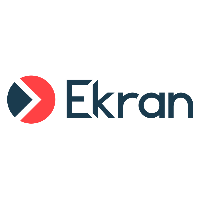Installing macOS Clients Locally Using the Command Line
This type of installation allows you to install macOS Clients locally from the command line.
To install the macOS Client on a target computer running the macOS operating system from the command line, do the following:
1. Copy the downloaded standard SytecaMacOSClientuniversal.tar.gz (or custom SytecaMacOSClientuniversal.tar.gz, containing the settings.ini file) installation package to any folder on the macOS system.
NOTE: When using the macOS hidden Client (instead of the standard macOS Client), the "SytecaMacOSClientuniversal.tar.gz“ installation package is instead called "macos_hidden_agent_universal.tar.gz".
2. Run the Terminal application.
3. Navigate to the folder with the macOS installation package by entering the following command:
cd <path_to_folder>
4. Unpack the macOS installation package by entering the following command:
tar xvfz <installation_package_name>
5. Open the EkranClient folder.
6. Enter the following command to run the Syteca Client application, specifying the host name or IP address of the computer which the Application Server is installed on, and the port to be used for connection to the Application Server (if the port parameter is omitted, the default port 9447 will be used), as well as the tenant key of the tenant that the Client needs to be installed on if Multi-Tenant mode is enabled:
sudo ./install.sh -h <server_host_name / IP address> [-p <port>] [-t <tenant>]
NOTE: Multiple server host names / IP addresses can be entered, separated by semicolons (e.g. <server_host_name1 / IP address1;server_host_name2 / IP address2;server_host_name3 / IP address3>.
NOTE: For SaaS deployments, the host name / IP address of the load balancer on the Syteca proxy server should be used for the "-h" argument.
NOTE: In Multi-Tenant mode, the tenant key can be copied from the Management Tool (on the Tenant Management page) by the administrator of the default tenant. If a tenant key is not specified, the Client will be installed on the built-in default tenant.
Instead, if the EkranClient folder in the macOS installation package contains a settings.ini file, the install.sh script needs to be run without adding any parameters.
7. The Accessibility and Screen Recording permissions for the Syteca Session Client application need to be granted to ensure the correct functioning of the Client. To check that these permissions are granted, make sure that the Syteca Session Client toggle is selected for these permissions, as follows:
• For macOS 12 (Monterey), open System Preferences, and click Security & Privacy, and then click Privacy.
• For macOS 13 (Ventura) or higher, open System Settings, and click Privacy & Security, and then check the permissions on the Accessibility and Screen and System Audio Recording tabs.
NOTE: When using the macOS hidden Client (instead of the standard macOS Client), the Syteca Session Client application is instead called "System Analysis".
8. After installation is complete, the macOS Client will be displayed in the list of Clients on the Client Sessions tab (on the Client Management tab) in the Management Tool.
For SaaS deployments, after installing the Client locally, it is then recommended to also trust the root certificate on the macOS Client computer (for SaaS deployments).
